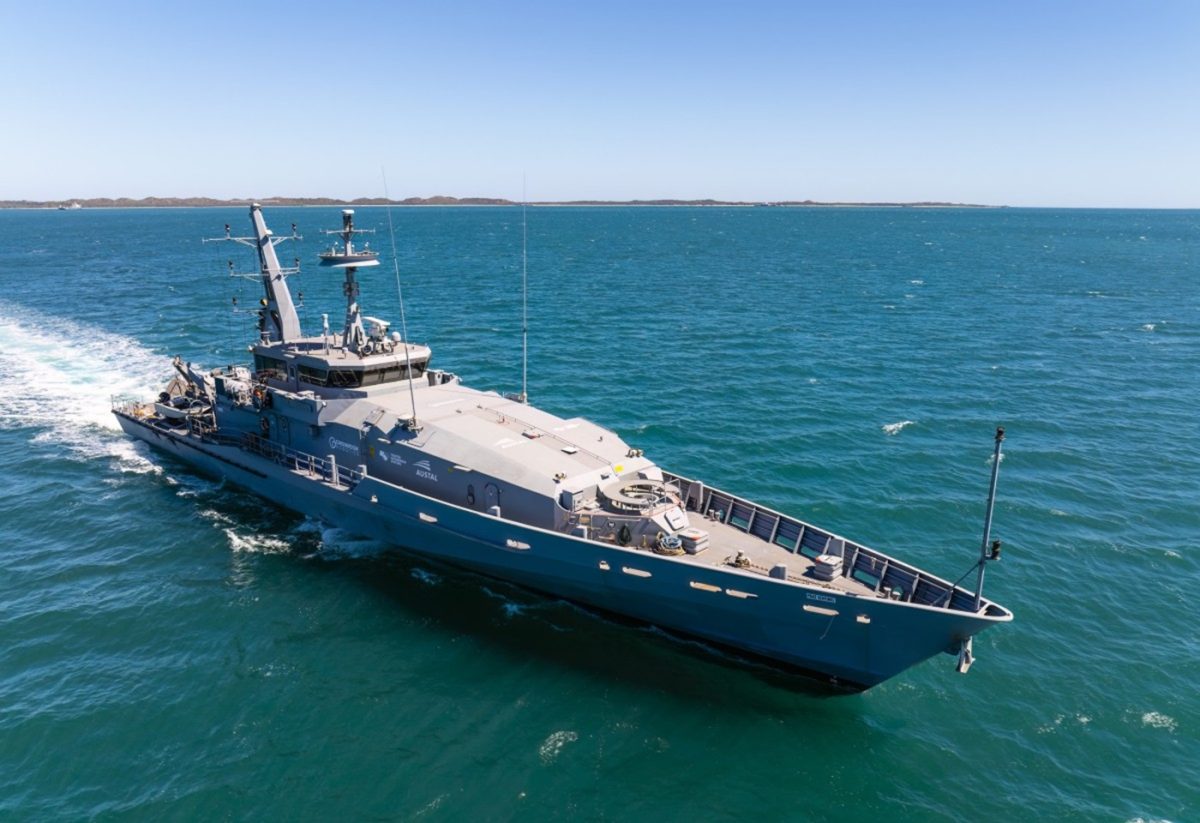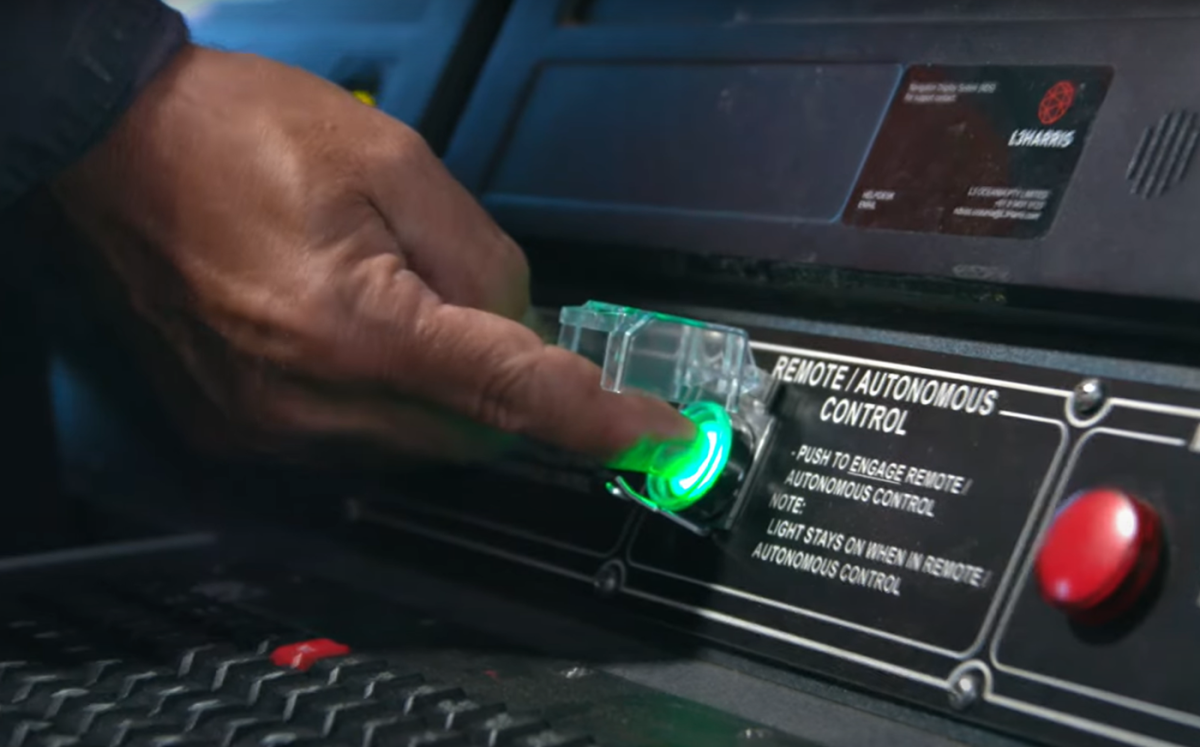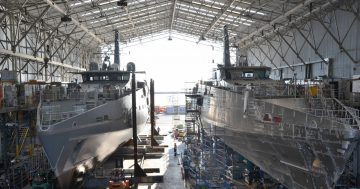
The navy’s former Armidale-class patrol boat HMAS Maitland was modified and renamed Sentinel for the PBAT series. Photo: Austal.
WA-based Austal has successfully conducted a series of trials of a former Royal Australian Navy Armidale-class patrol boat modified with autonomous control systems.
Formerly HMAS Maitland but now renamed Sentinel, the remote and autonomously operated vessel is part of the collaborative Patrol Boat Autonomy Trial (PBAT) project that successfully completed Sea Acceptance Trials, including endurance tests.
Funded by the ADF, the trial is a collaboration between Henderson-based Austal Australia, Greenroom Robotics, Trusted Autonomous Systems and the Royal Australian Navy’s Warfare Innovation Navy (WIN) Branch. The team added robotic, automated and autonomous elements to the former navy patrol boat to provide a proof-of-concept demonstrator for optionally crewed or autonomous operations.
The trial consisted of a series of remote and autonomous navigation events conducted off the WA coast during March and April using Greenroom Robotics’ Advanced Maritime Autonomy (GAMA) software to navigate the vessel.
Throughout the trials, a crew of project team members, observers and International Maritime Services (IMS) personnel remained on board in case a swift response to any unforeseen deviations or manual intervention was required.
The 57-metre-long Sentinel is the largest vessel ever operated in Australia remotely and autonomously. It was extensively modified to enable remote and autonomous operations, including modifications to navigation, communications, bilges, CCTV, and electrical systems.
Sensors and computer units were also added by Greenroom Robotics to inform and host the GAMA software.
Austal says the goals of the PBAT were to:
- Progress the concept of remote operations and the autonomous certification approach
- Increase the understanding of fuel management, communication, and navigation systems to be made autonomous
- Investigate and understand the sustained operation of shipboard mechanical systems without crew intervention
- Provide input to long-term risk reduction for future naval projects, considering remote or autonomous vessels
- Transfer lessons learned on the application of remote or autonomous systems to the navy’s current fleet to potentially optimise crew workload.

The vessel retained a small crew of project staff, observers and International Maritime Services personnel during the trial. Photo: Screenshot.
Austal Limited CEO Paddy Gregg said the completion of the sea testing marked a significant milestone in the PBAT, successfully demonstrating the capability of the locally developed autonomous systems and their integration within a full-size, Australian-made naval vessel.
“Looking ahead, we are excited about the potential opportunities to work with navy to further advance the autonomous technology demonstrated during the trial, on projects such as the large optionally crewed surface vessels (LOSVs) recently announced by the Australian Government,” he said.
The planned LOSVs were part of the government’s February Surface Combatant Fleet Review announcement of a fundamental shift in the future composition of the navy’s surface fleet, with six LOSVs planned to augment crewed vessels.
Greenroom Robotics chief technology officer Harry Hubbert added: “PBAT has been a very successful collaborative project between Austal, Greenroom, TASDCRC and the RAN, [and] the insights from all parties have been instrumental in steering us toward success.
“Together, we’ve harnessed collective expertise to deliver this ground-breaking project, setting the stage for a future brimming with maritime capability.
“This collaborative effort not only has the potential to enhance current operations and platforms but also paves the way for unprecedented advancements on the horizon.”
WIN director-general Commodore Michael Turner said: ”PBAT stands out not only for its demonstration of autonomous technology and its practical application to operational vessels, but also for the spirit of collaboration that underpinned its success.”



